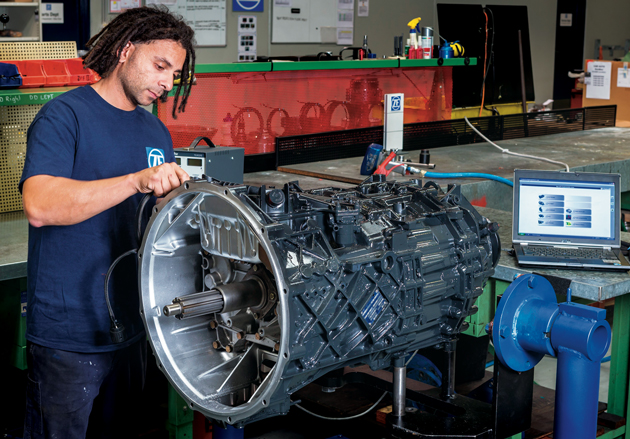How to Identify Transmission Fluid Leaks in Your Truck
Welcome to East Line Road Repair Shop’s blog! If you’re a truck owner in Willards or Salisbury, MD, you understand the importance of keeping your vehicle in top condition. One crucial aspect of truck maintenance is monitoring for transmission fluid leaks. In this guide, we’ll walk you through the process of identifying transmission fluid leaks in your truck, ensuring you catch issues early and avoid costly repairs down the road.

1: Understanding Transmission Fluid
Before diving into how to identify leaks, let’s first understand the role of transmission fluid in your truck’s performance. Transmission fluid serves multiple purposes, including lubricating moving parts, cooling the transmission system, and facilitating smooth gear shifts. It’s typically red or brown in color and has a distinct odor.
2: Signs of a Transmission Fluid Leak
Now that you know the importance of transmission fluid, let’s discuss the telltale signs of a leak. Keep an eye out for the following indicators:
- Puddles Underneath the Truck: Transmission fluid leaks often manifest as puddles of red or brown fluid underneath your truck, especially after it has been parked for a while.
- Low Fluid Levels: Regularly check your transmission fluid levels using the dipstick. A sudden drop in fluid level could indicate a leak.
- Burning Smell: If you notice a burning odor while driving, it could be a sign that transmission fluid is leaking onto hot engine components.
- Slipping Gears: Transmission fluid is essential for smooth gear shifts. If you experience gears slipping or difficulty shifting, it could be due to a lack of fluid caused by a leak.
3: Locating the Leak
Once you’ve identified potential signs of a transmission fluid leak, it’s time to locate the source. Here are some common areas to inspect:
- Transmission Pan: Check the transmission pan for signs of corrosion or damage, which could lead to leaks.
- Transmission Cooler Lines: Inspect the lines that connect the transmission to the radiator for any cracks or leaks.
- Output Shaft Seal: This seal prevents fluid from leaking out of the transmission. If it becomes worn or damaged, leaks can occur.
- Transmission Fluid Cooler: If your truck is equipped with a transmission fluid cooler, inspect it for leaks or damage.
4: DIY vs. Professional Repairs
Depending on the severity of the leak, you may be tempted to attempt DIY repairs. While minor leaks such as loose bolts or worn gaskets can sometimes be fixed at home, more complex issues require the expertise of a professional technician. Attempting repairs without the proper knowledge and tools can worsen the problem and result in costly damage.
5: Why Choose East Line Road Repair Shop?
If you need truck transmission repair in Willards or Salisbury, MD, trust the experts at East Line Road Repair Shop. Our team of experienced technicians specializes in diagnosing and repairing transmission issues, ensuring your truck stays on the road safely and reliably.
Conclusion:
Don’t ignore the signs of a transmission fluid leak in your truck. By staying vigilant and addressing issues promptly, you can prevent further damage and costly repairs. Whether you choose to inspect your truck yourself or seek professional help, prioritize maintenance to keep your vehicle running smoothly for years to come.
Remember, for top-quality truck transmission repair in Willards and Salisbury, MD, East Line Road Repair Shop is here to help. Visit our website or contact us today to schedule an appointment.
